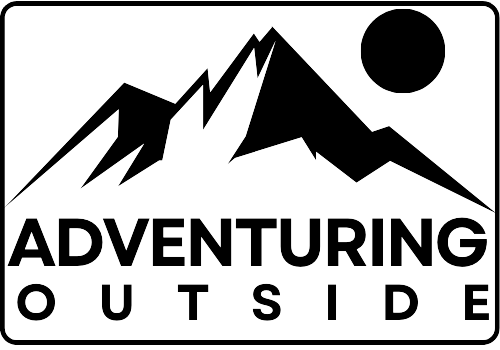Visiting Zion National Park is an exhilarating experience, offering breathtaking landscapes and a chance to connect with nature. However, the park’s popularity often leads to crowded trails and viewpoints, which can detract from the serenity of the experience. To fully enjoy the beauty of Zion without the bust navigation of crowds, it’s essential to plan the trip during off-peak times.
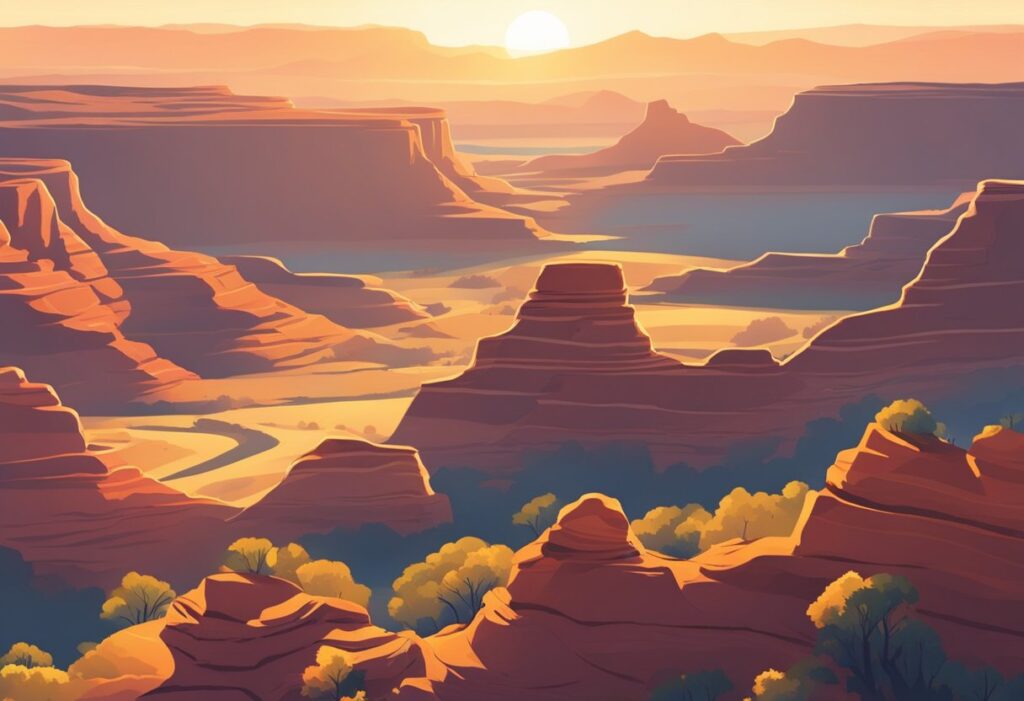
We’ve gathered insights into the less congested periods to guide you. While Zion welcomes guests year-round, the peak season runs from March to November due to favorable weather conditions and school holidays. To avoid crowds, consider visiting in early March or late November when the visitor numbers are typically lower. Another strategy is choosing weekdays for your park excursions, as they usually experience lighter foot traffic compared to weekends. By timing your visit strategically, you can enjoy Zion’s majestic canyons and high plateaus in relative solitude.
Key Takeaways
- Planning a visit to Zion outside of March to November reduces encounters with excessive crowds.
- Weekdays often offer a more secluded park experience compared to busy weekends.
- Early morning visits to popular trails and attractions can also minimize crowd interaction.
Understanding Zion’s Peak Seasons
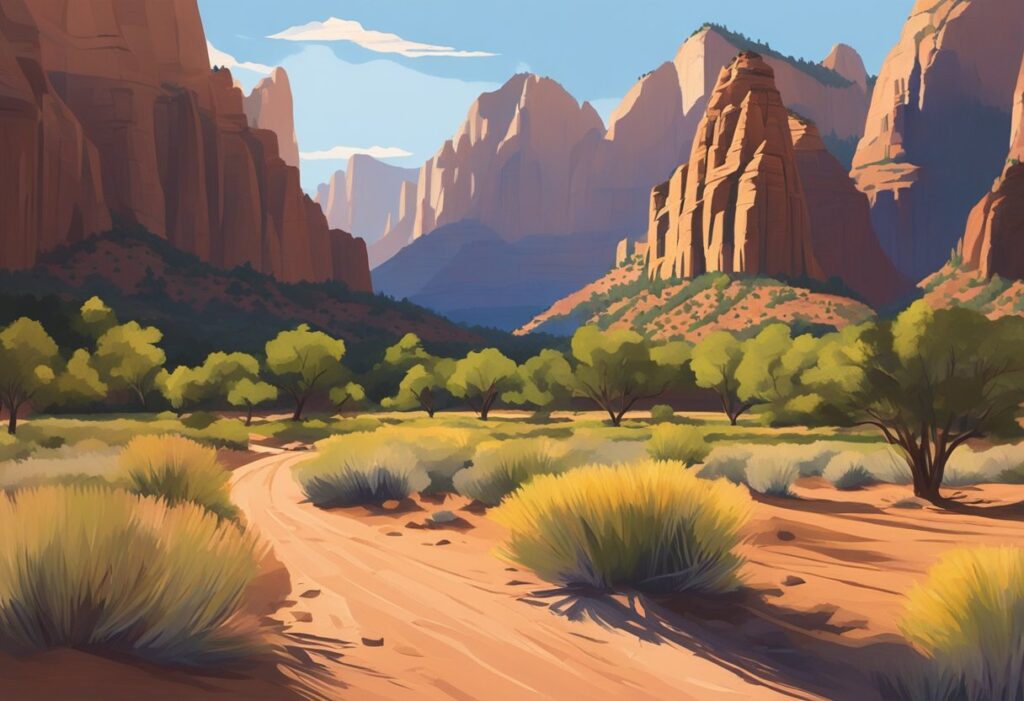
As we explore Zion National Park’s visitation trends, it’s important to recognize when the park experiences the highest number of guests. Distinct seasons bring different levels of crowds, each with its own set of considerations.
Summer Season
Summer in Zion National Park is the peak season with the highest number of visitors. We see significant crowds from Memorial Day to Labor Day as temperatures often soar above 100°F (38°C). Despite the heat, the allure of summer vacations brings families and adventurers alike, making for busy trails and congested park amenities.
Winter Wonderland
Winter offers a quiet reprieve from crowds, transforming Zion into a serene winter wonderland. November through February sees the lowest visitor numbers, but it’s also the coldest period. While snow dusts the landscape, creating stunning vistas, some facilities and trails may be closed or difficult to navigate due to weather conditions.
Shoulder Seasons: Spring and Fall
Spring (March through April) and fall (August through October) constitute Zion’s shoulder seasons. These periods tend to offer a balance of favorable weather and fewer visitors. Specifically, March and November sit on the edges of the busy season, presenting opportunities for more solitude on the trails. Late spring and early fall provide milder temperatures ideal for hiking and enjoying the park’s natural beauty without the summer swell of tourists.
Monthly Breakdown for Visiting Zion
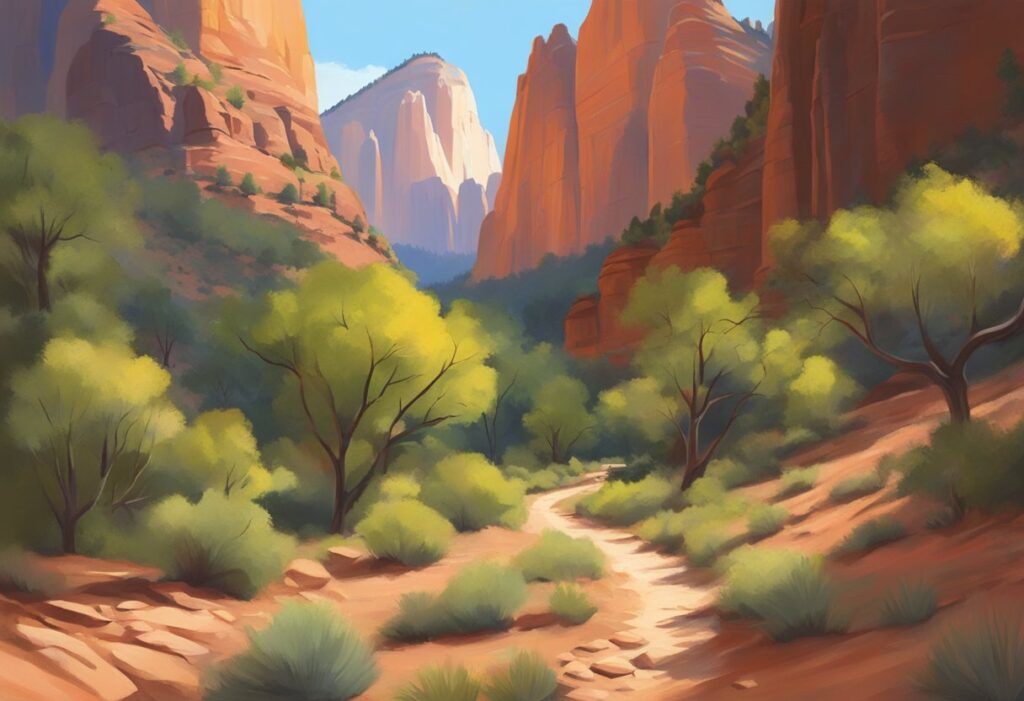
We offer you a month-by-month guide to visiting Zion National Park, focusing on avoiding the crowds while taking advantage of the best seasonal conditions.
January and February
During January and February, you’ll find Zion in its quietest state. Visitors are few, allowing for a serene experience. The weather is cold with potential snow, so wear layers. However, the chilly temperatures mean much thinner crowds.
- January Average Temperature: Highs of 52°F (11°C), Lows of 29°F (-2°C)
- February Average Temperature: Highs of 57°F (14°C), Lows of 31°F (0°C)
March to May Bliss
March sees the beginning of the busier season, but weekdays can still offer solace. April and May’s mild weather is perfect for hiking, with the park getting more colorful as May approaches.
- March Average Temperature: Highs of 63°F (17°C), Lows of 36°F (2°C)
- April Average Temperature: Highs of 70°F (21°C), Lows of 41°F (5°C)
- May Average Temperature: Highs of 80°F (27°C), Lows of 49°F (9°C)
June to August Heat
June to August brings the summer heat and the peak of visitor numbers. Early mornings and late evenings are the best times to avoid the heat and the crowds. Staying hydrated and wearing sun protection is crucial.
- June Average Temperature: Highs of 91°F (33°C), Lows of 58°F (14°C)
- July Average Temperature: Highs of 100°F (38°C), Lows of 68°F (20°C)
- August Average Temperature: Highs of 97°F (36°C), Lows of 66°F (19°C)
September to November Charm
This period brings a pleasant drop in temperature and crowds, especially noticeable in November. The autumn colors are amazing, and wildlife viewing opportunities increase.
- September Average Temperature: Highs of 90°F (32°C), Lows of 60°F (16°C)
- October Average Temperature: Not mentioned, but generally cooler than September
- November Average Temperature: Highs of 63°F (17°C), Lows of 37°F (3°C)
December Delights
Zion in December can be especially peaceful, with the lowest visitor numbers all year. The weather is cold, and there might be snow, but the stark beauty of the park is undeniable.
- December Average Temperature: Highs of 53°F (12°C), Lows of 30°F (-1°C)
Navigating Zion’s Trails and Attractions
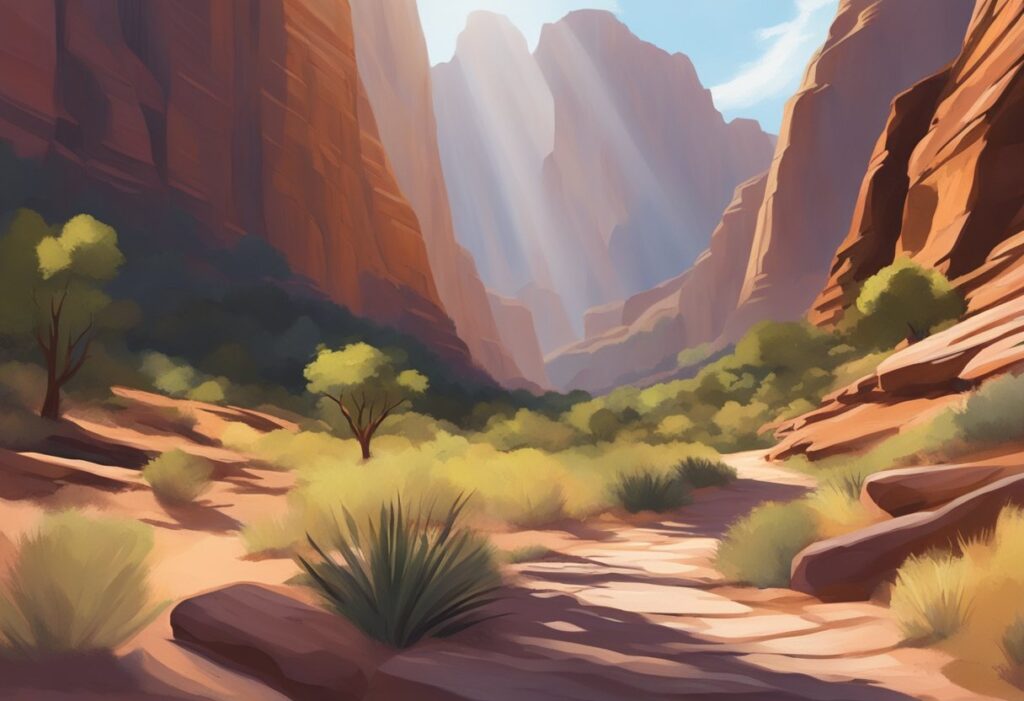
When we aim to explore Zion National Park without the crowds, we focus on timing and trail selection. Early mornings and off-peak months offer the best opportunities for solitude.
Less-Traveled Trails
We prioritize less-traveled trails to enhance our experience. Here’s a list we might consider:
- Observation Point: Offers panoramic views with fewer hikers than Angels Landing.
- Hidden Canyon: A tucked-away trail providing a sense of adventure with fewer footprints.
- Kolob Arch: Located in the park’s northwest corner, this hike is longer and less frequented.
By selecting these paths, we step away from the busier routes yet still capture Zion’s beauty.
Must-See Landmarks
Even with the intention to avoid crowds, some landmarks are worth the visit:
- Angels Landing: For an early morning hike, we secure a spot before sunrise to experience this iconic trail with minimal company.
- The Narrows: Wading through the Virgin River in off-peak seasons like March or October can mean a more isolated journey through the towering slot canyons.
- Emerald Pools: Our visit here might include a late afternoon stroll to enjoy the serene ambiance with fewer hikers.
By carefully planning our day and choosing our moments, we maximize our adventure and minimize the intrusion of crowds.
Tips for Avoiding Crowds
In our exploration of Zion National Park, we emphasize strategies that significantly reduce encounters with heavy tourist traffic, ensuring a more peaceful and personal experience.
Best Times for Solitude
Early Morning or Late Afternoon: We recommend arriving early in the morning or lingering until the late afternoon. These times typically see fewer visitors, providing a sense of solitude, especially along Zion Canyon’s popular trails.
- Weekdays Over Weekends: Aiming for a weekday visit can make a notable difference. We counsel avoiding the park during weekends when crowds tend to peak.
- Off-Peak Seasons: Engage with Zion’s beauty during the quieter months from November through early March. This excludes major holidays when the visitor influx temporarily rises.
Shuttle Schedules: Always consult the Zion Canyon shuttle schedule. When they’re less frequent, it often signals lighter visitor counts.
Alternatives to the Main Canyon
Kolob Canyons Area: For those seeking to escape the bustle of Zion Canyon, Kolob Canyons presents a less frequented but equally majestic section of the park.
- Lesser-Known Hikes: Trails such as the Kolob Arch hike offer stunning vistas without the crowds.
- Visitor Center: Stop by the Kolob Canyons Visitor Center for up-to-date information on trail conditions and to plan a route that provides a respite from high-traffic areas.
Transportation Within Zion National Park
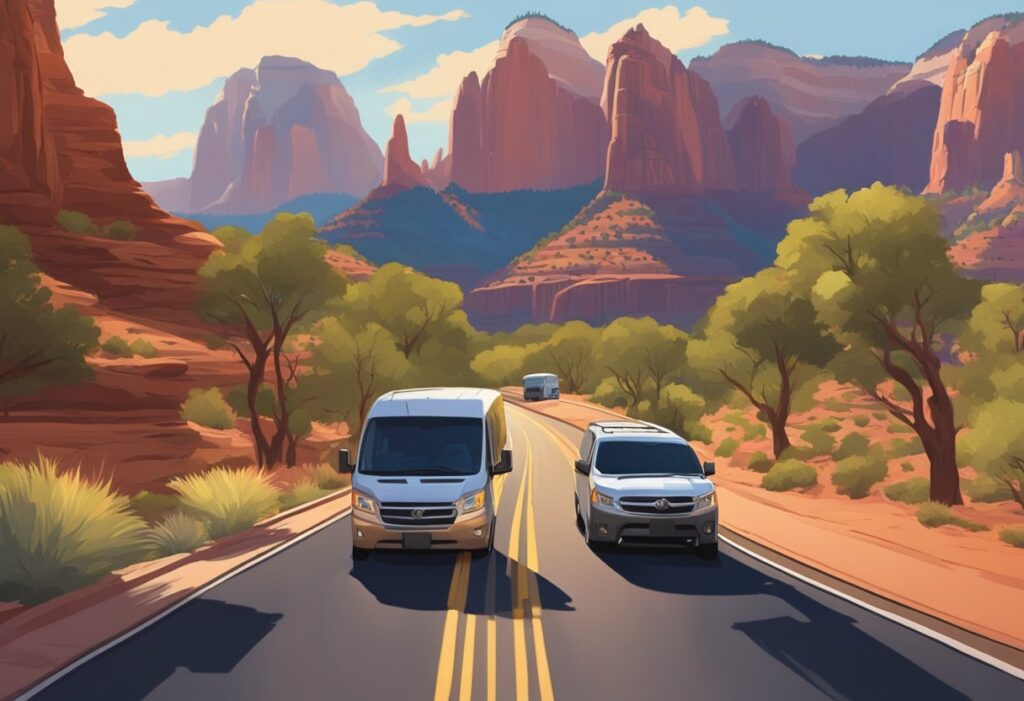
We understand that navigating through Zion National Park efficiently is crucial for a smooth visit, particularly when it comes to utilizing the shuttle system and managing parking. Let’s go through the specifics to aid in your planning.
Understanding the Shuttle System
Zion National Park operates a free shuttle bus system to minimize traffic congestion and protect the environment. From early spring through late fall, these shuttle buses are the primary mode of transportation for visitors to access the park’s Scenic Drive and its main canyon. The shuttles run frequently throughout the day providing a convenient and frequent service, with stops at key locations such as trailheads and points of interest.
- Town Shuttle: Connects the town of Springdale to the park entrance.
- Park Shuttle: Runs along the Scenic Drive and stops at multiple points within the park.
Shuttle services are adjusted based on seasonal visitor patterns, generally increasing frequency during peak visitation months.
Parking and RV Considerations
In Zion, the parking situation is straightforward:
- Parking Inside the Park: Available near the Visitor Center but often fills up early morning.
- RV Parking: Designated parking for RVs is available, but space is limited and operates on a first-come, first-served basis.
To ensure a parking spot within the park, we advise arriving before 8 AM or after 3 PM during peak season. Alternatively, you can park in Springdale and use the free town shuttle to reach the park entrance. Keep in mind that:
- Springdale Parking: May have a fee and is also subject to availability.
- Park and Ride: Encouraged to reduce congestion, with parking areas located in Springdale.
By using the shuttle buses and being mindful of parking logistics, we can help keep Zion National Park a pristine and accessible place for all visitors.
Zion’s Weather and Environmental Conditions
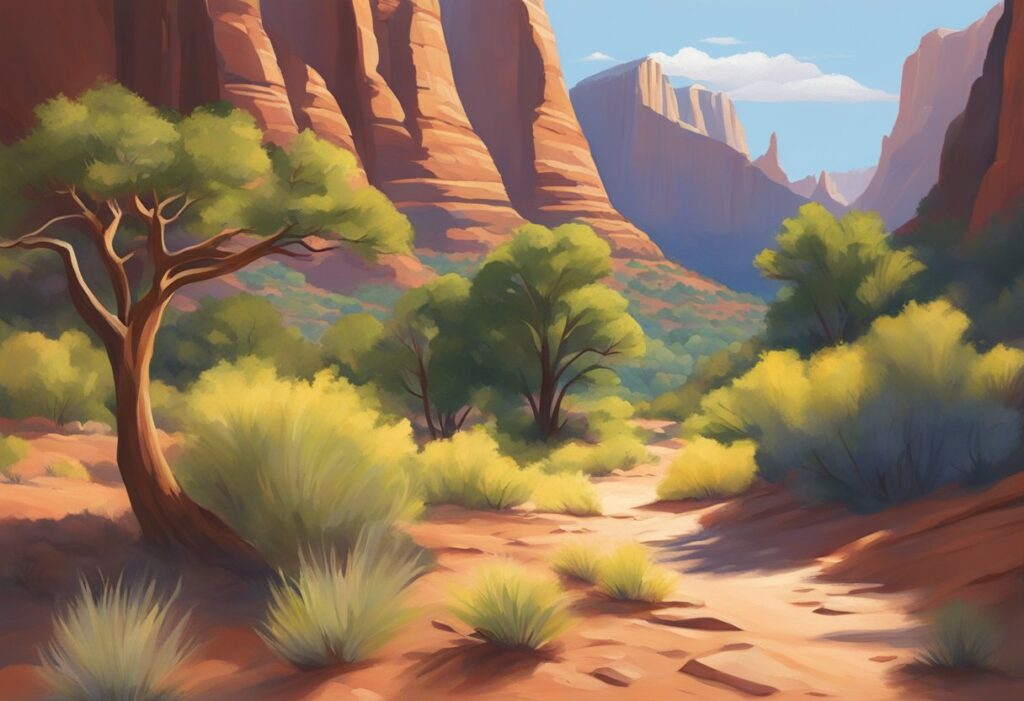
We must consider the dynamic climate of Zion National Park, where weather plays a crucial role in planning a visit. The park experiences a range of environmental conditions that can directly impact your exploration, from potential flash floods to varying temperatures.
Anticipating Flash Floods
Flash floods are a vital consideration, particularly in the Virgin River and its tributaries, which wind through the park. These floods can occur with little warning due to heavy rains during the monsoon season, which runs from July through September. It’s essential to check the weather forecast and flash flood potential ratings, which are categorized as follows:
- Low: Flash flooding is not expected.
- Moderate: Flash floods could occur.
- High: Flash flooding is likely.
- Extreme: Flash flooding is expected imminently.
Before embarking on any hikes, especially through narrow canyons like The Narrows, we ensure we’re aware of the day’s flood risk.
Summer Heat vs. Winter Cold
Temperature Fluctuations:
Zion National Park experiences extreme temperature variations between summer and winter. During the summer months, temperatures often exceed 100°F (38°C), while in the winter, they can drop below freezing, with occasional snowfall adding to the cold.
Summer Highlights:
- Daytime temperatures: 90-100°F+ (32-38°C+)
- Nighttime temperatures can also be warm.
- Hydration is crucial to prevent heat exhaustion.
Winter Highlights:
- Daytime temperatures: 50-60°F (10-16°C)
- Snowfall is common in higher elevations but less frequent in Zion Canyon.
- Icy conditions can occur; traction devices for shoes are recommended.
In our visits, we always prepare for the heat or cold by dressing in layers, carrying sufficient water, and wearing appropriate footwear for the season’s challenges. Weather can change quickly in Zion, and we stay informed of the current conditions to ensure a safe and enjoyable trip.
Accommodations and Amenities Near Zion
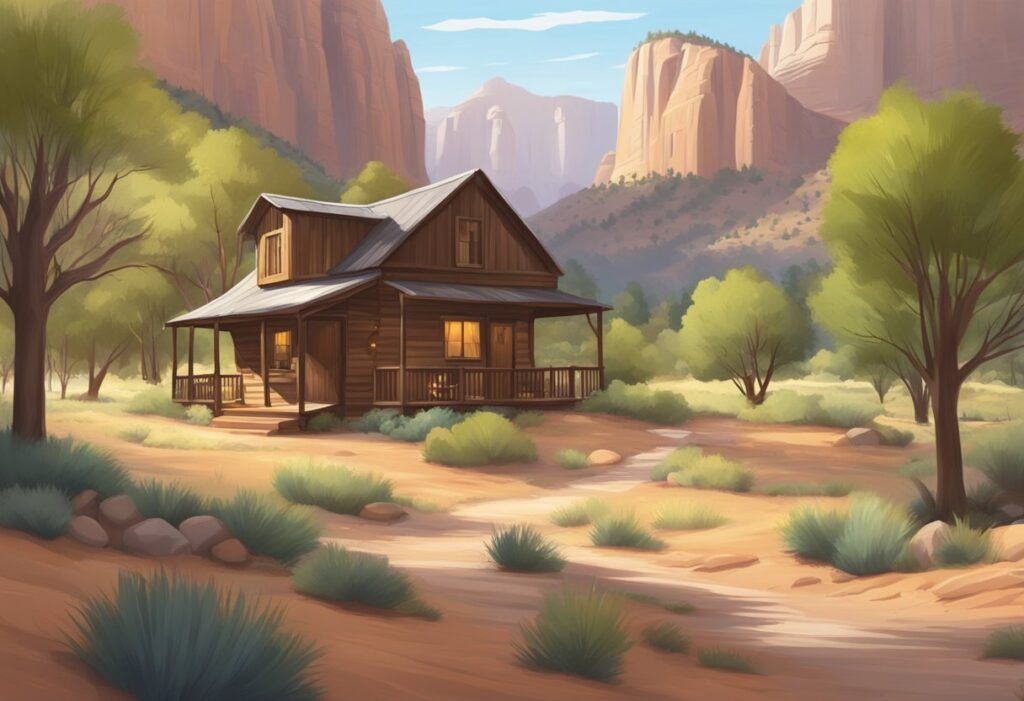
When planning your visit to Zion National Park, choosing the right accommodations is crucial for a convenient and comfortable experience. We have a selection of places to stay, ranging from on-site options within the park to a variety of hotels in the surrounding areas.
Camping and Zion Lodge
- Zion Lodge: Located inside Zion National Park, Zion Lodge offers cabins, hotel rooms, and suites. Reservations are highly recommended, especially during peak seasons, to ensure availability.
- Camping: For those who prefer to be closer to nature, there are several campgrounds within the park, including the popular Watchman Campground. These sites are ideal for visitors who are looking for a more rustic experience. Camping reservations are advised to be made well in advance.
Hotels in Springdale and Beyond
- Springdale: Located at the park’s entrance, Springdale offers a range of hotel accommodations, from budget-friendly to more upscale amenities. Springdale provides easy access to the park and a variety of dining and shopping options.
- Beyond Springdale: For those willing to stay a bit further away, there are additional hotel accommodations in nearby cities such as Hurricane, St. George, and Kanab. These locations offer a wider range of choices and often more competitive pricing.
Proximity to Other Attractions:
- Bryce Canyon and Grand Canyon: Visitors can also consider accommodations that allow for day trips to nearby Bryce Canyon or the North Rim of the Grand Canyon.
- Las Vegas and Salt Lake City: For those flying in, Las Vegas and Salt Lake City are major urban centers that provide access to Zion. Both cities have numerous hotel options and are within a few hours’ drive of the park.
Frequently Asked Questions
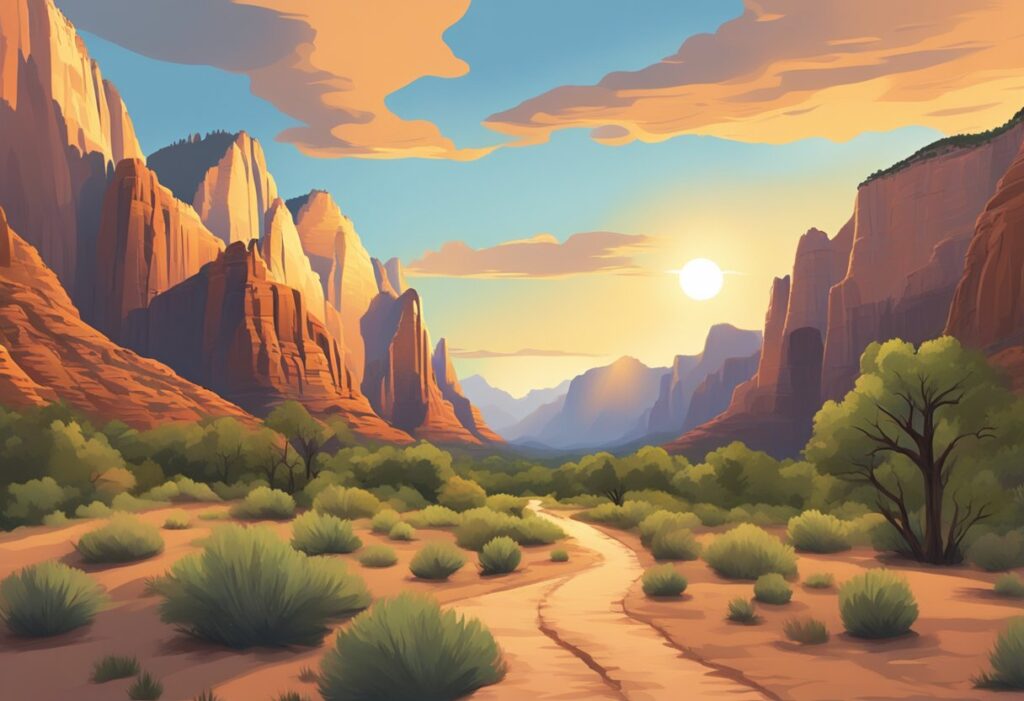
In answering these frequently asked questions, we aim to guide you on the optimal times to visit Zion National Park for a more serene experience away from the crowds.
What months typically experience fewer visitors in Zion National Park?
March and November are generally less crowded. These months are on the shoulder of the peak season, offering a balance of pleasant weather and reduced visitor numbers.
During which season is Zion National Park less crowded?
Winter, from December through February, is the season when the park sees fewer visitors. The colder temperatures and the potential for snow reduce tourist traffic.
What days of the week are best for avoiding congestion in Zion National Park?
Weekdays, particularly from Tuesday through Thursday, often experience lower visitation compared to weekends.
What are the least busy times to visit the Zion Narrows?
Visiting the Zion Narrows is best in the late fall or early spring. Fewer visitors undertake this hike outside the summer months.
How early should one arrive at Zion to secure parking and experience lower crowd levels?
Arriving by 8 AM can help ensure you find parking and experience quieter trails, especially during the busier seasons.
Are there quieter periods during the winter months to explore Zion National Park?
Late winter, specifically February, before the spring break crowds arrive, is a quieter period, offering solitude and the unique beauty of Zion with potential snow-capped scenery.
